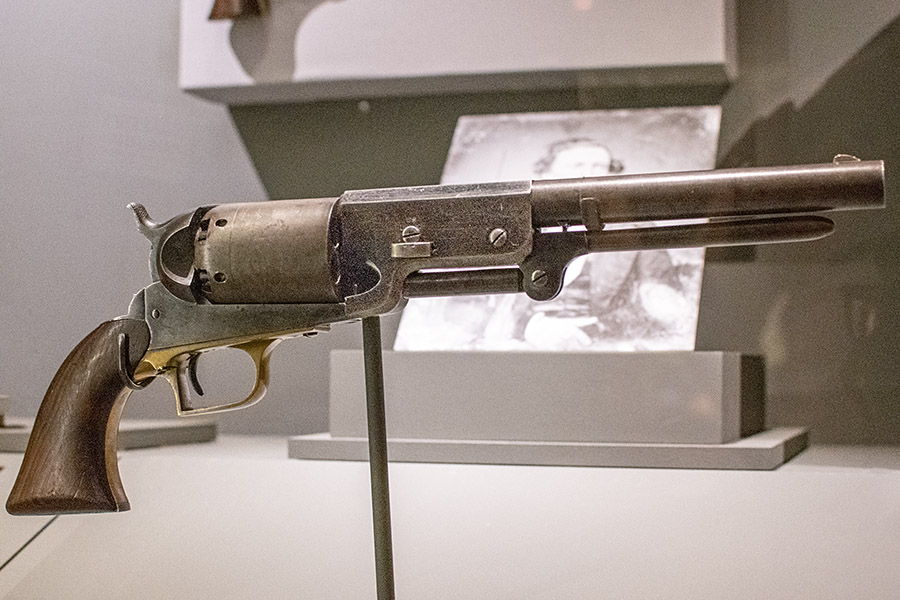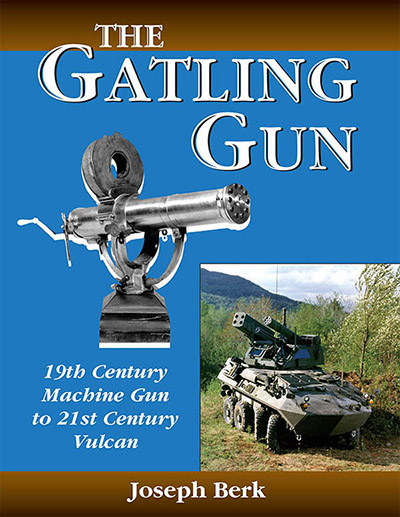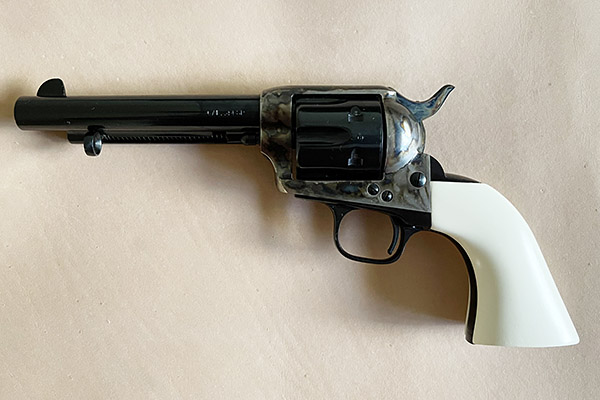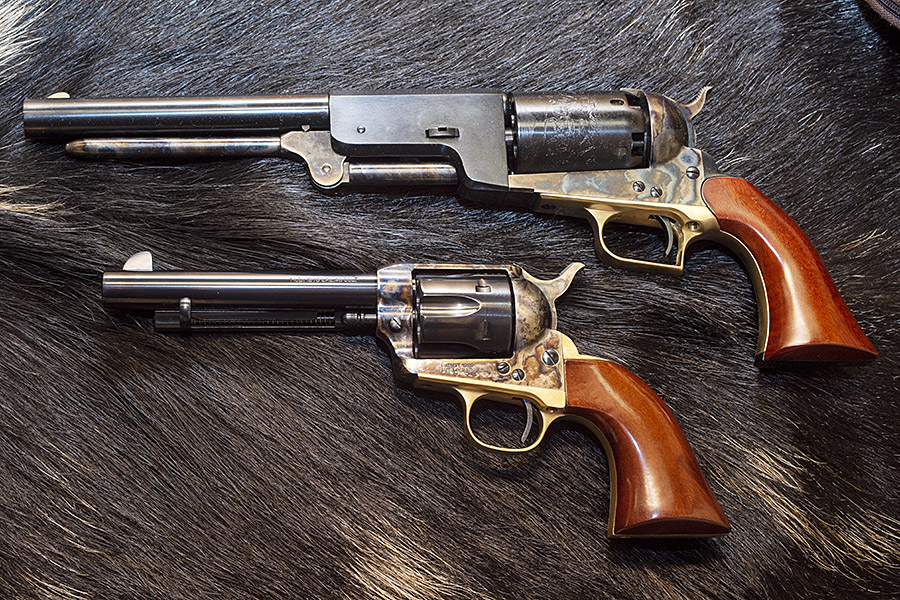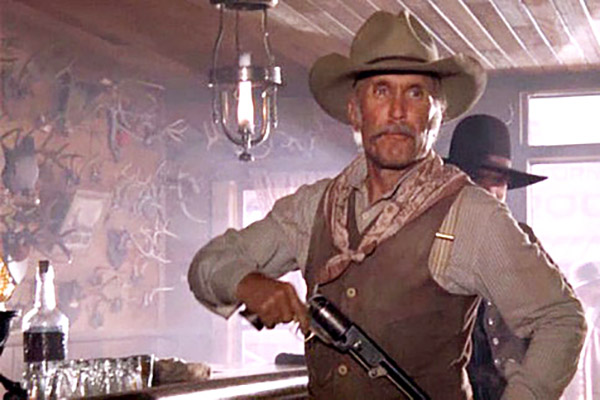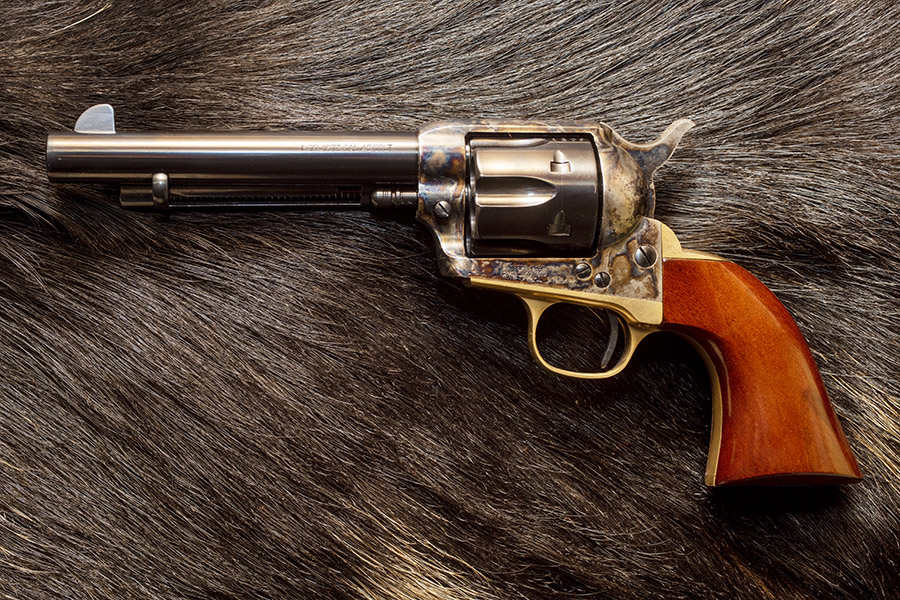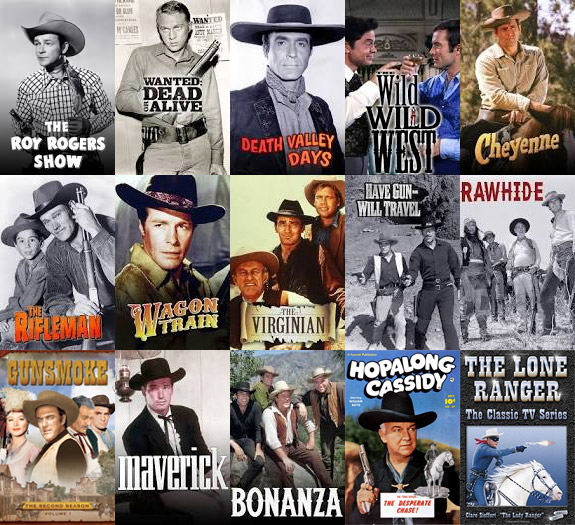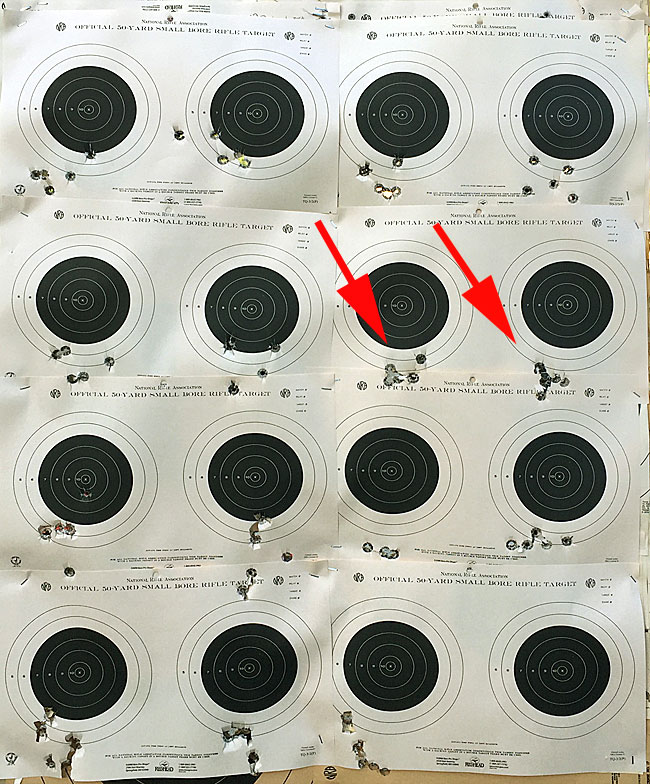By Joe Berk
I haven’t been to the Autry Museum in Los Angeles since 2018 when I took the photos you see here. I’ll get out there in the next few months. It’s one of the great destinations in the Los Angeles area, and what makes the Autry even better for me is the extensive firearms display.
I found these photos when I was poking around a bit on an external hard drive. For this blog, I’m including only the Colts in the Autry Museum. I only photographed a few of firearms I saw there. The Autry had more Colts, as well as Winchesters and other firearms on display.
The photos were a challenge. Each of the guns you see here was behind glass, and the lighting was fairly dim in the firearms display area. I was using my D3300 Nikon with its standard 18-55mm lens, shooting at ISO settings of 800 to 3200. These are not conditions conducive to capturing good images. I did the best I could.
The sixgun you see in the photo above is an original Colt Walker, one of the one thousand guns Sam Colt manufactured for Sam Walker in 1847. The last original Walker I know of that sold went for a million bucks. We’ve mentioned the Colt Walker in an earlier ExNotes blog. I bought the Uberti reproduction; the reproduction Uberti Walkers sell for just over $500.
The Autry Museum firearms collection features several Colt black powder revolvers. In addition to the Walker up top, here are a two more I photographed. The first one is a .36 caliber 1851 Colt Navy that belonged to Wild Bill Hickok. The second is a .44 caliber 1860 Colt Army. It’s quite fancy and it probably belonged to somebody famous, but I don’t know who (and that gives me a good excuse to get back out to the Autry Museum).
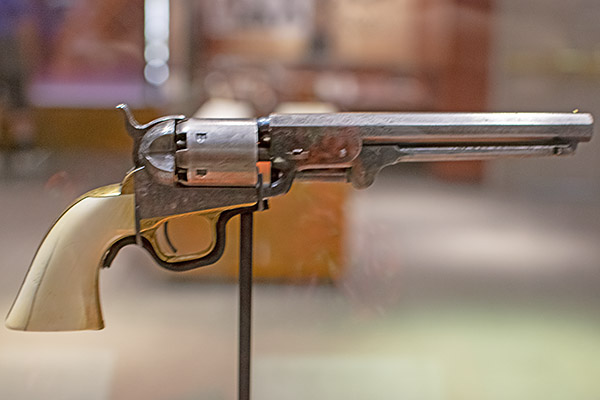

As you might imagine in a museum dedicated to the American West (and one carrying the name of a famous cowboy star like Gene Autry), the Colt 1873 Single Action Army revolver is well represented in this collection.
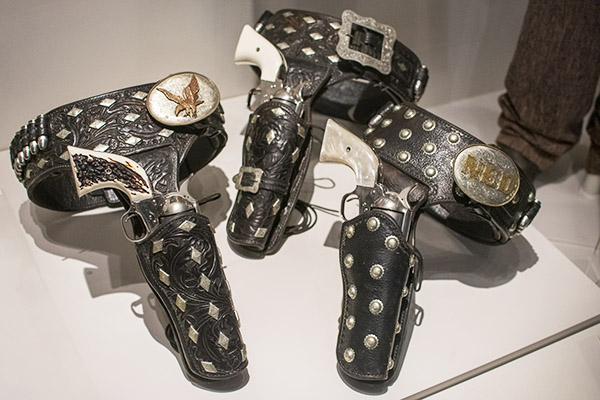
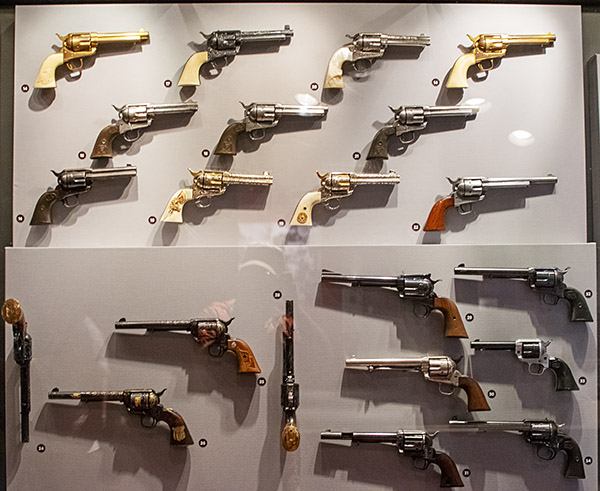
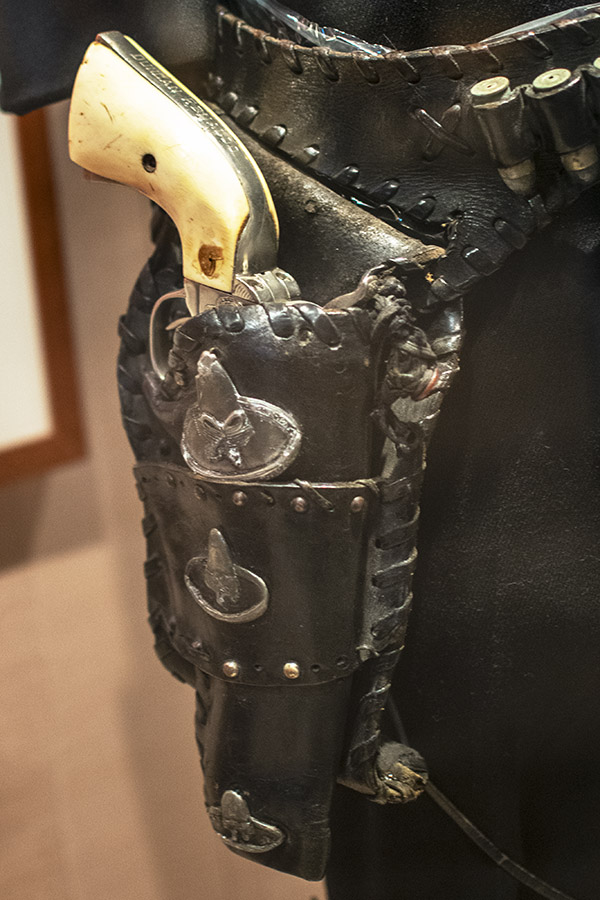
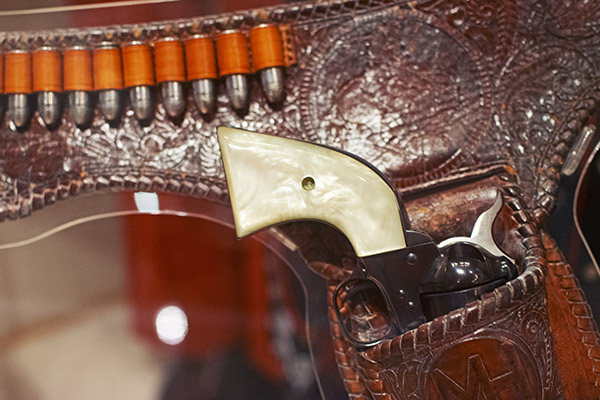
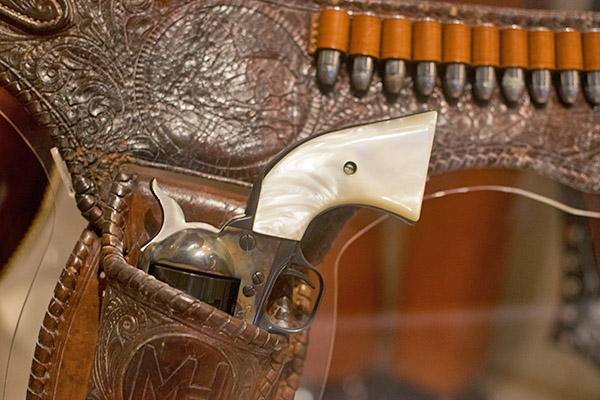
One of the 1873 Single Action Army revolvers on display at the Autrey Museum belonged to Theodore Roosevelt. His initials are carved into the ivory grips.
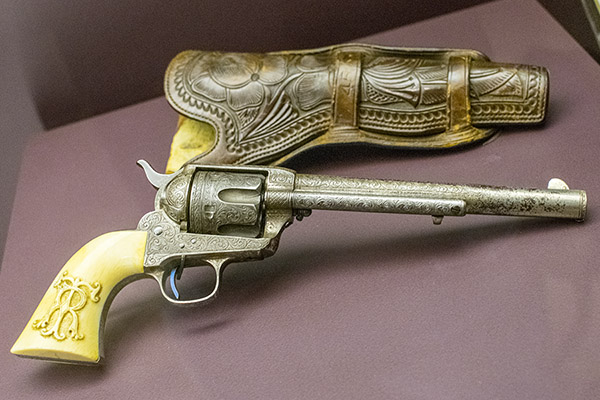
There were also a few Colt double action revolvers:
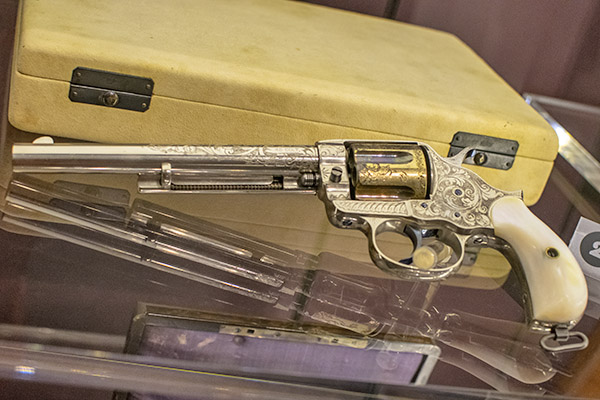
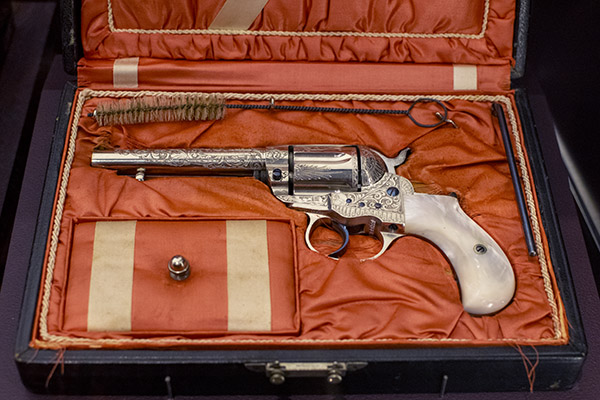 In addition to the early Colt revolvers, there were three Colt Pythons:
In addition to the early Colt revolvers, there were three Colt Pythons:


This is a crop showing some of the engraving detail on the revolver above.
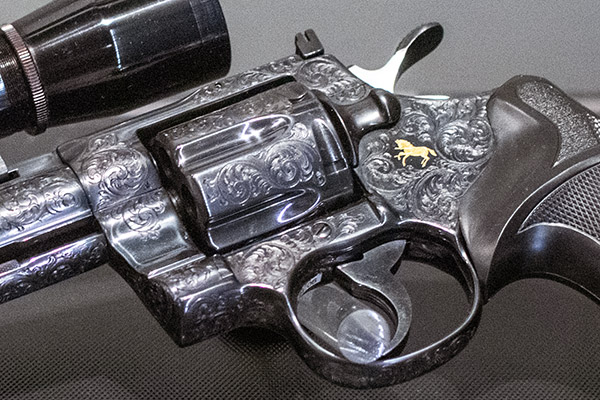
The Museum also displayed an engraved 1911 .45 Auto. This 1911 was manufactured by Colt and several other manufacturers (as is the case even today; Colt still makes the 1911 and so do many other companies). The 1911 shown here had the trigger guard cut away. The idea behind removing the trigger guard is that it allows getting off a shot more quickly. The modification is not something I’d want.

There was one more Colt I should mention: A Bulldog Gatling gun. Richard Jordan Gatling, the Gatling gun inventor, never operated his own factory. All U.S. Gatlings were manufactured by Colt in Hartford, Connecticut. They were also made under license in Russia military by the Orloff company.
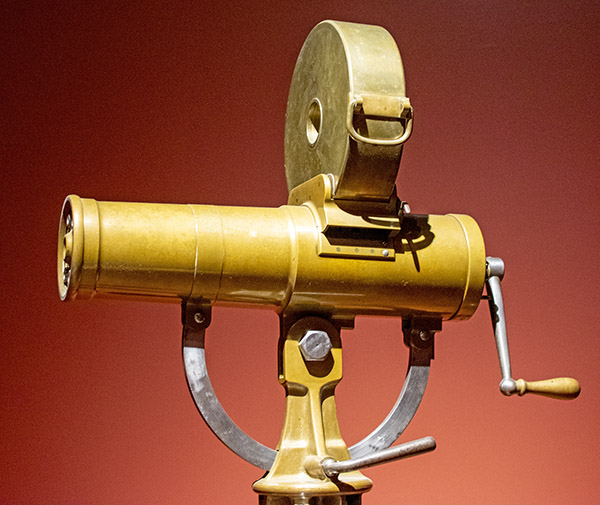
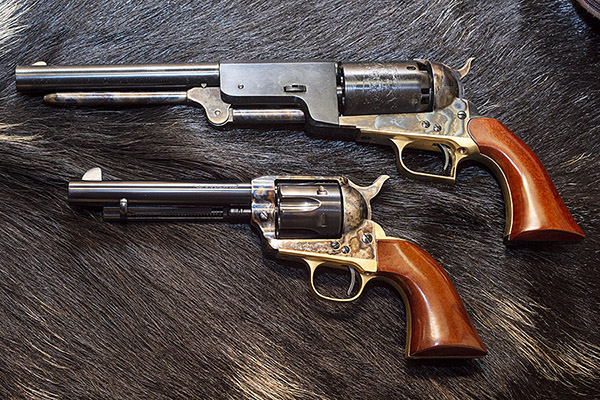
We’ve done other blogs in the past on the Colt Walker and the Colt Single Action Army (including the two replica revolvers you see in the photo above), other Colt black powder revolvers, and variations of the Gatling gun. Those blogs are here. You might also want to pick up our book on the Gatling gun.
Never miss an ExNotes blog:

